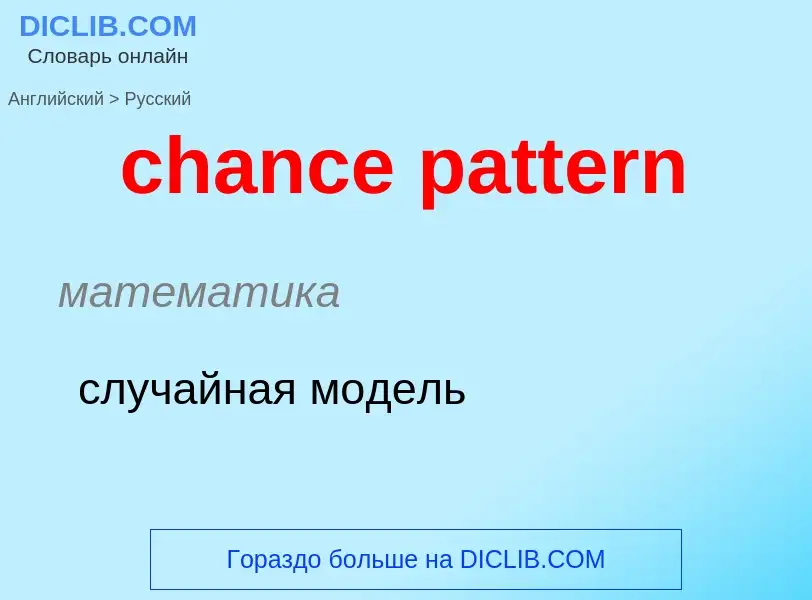Voer een woord of zin in in een taal naar keuze 👆
Taal:
Vertaling en analyse van woorden door kunstmatige intelligentie
Op deze pagina kunt u een gedetailleerde analyse krijgen van een woord of zin, geproduceerd met behulp van de beste kunstmatige intelligentietechnologie tot nu toe:
- hoe het woord wordt gebruikt
- gebruiksfrequentie
- het wordt vaker gebruikt in mondelinge of schriftelijke toespraken
- opties voor woordvertaling
- Gebruiksvoorbeelden (meerdere zinnen met vertaling)
- etymologie
chance pattern - vertaling naar russisch
WIKIMEDIA DISAMBIGUATION PAGE
Chance (movie); Chance!; Chance (disambiguation); Chanced; Chance! (disambiguation); Chance (song); Chance! (song); Chance (album); Chance (novel); Chance (film)
chance pattern
математика
случайная модель
chance pattern
случайная модель
pattern cutting
TEMPLATE FROM WHICH THE PARTS OF A GARMENT ARE TRACED ONTO FABRIC BEFORE BEING CUT OUT
Pattern making book; Pattern-making book; Patternmaking book; Sewing pattern; Dress pattern; Dress-maker's pattern; Pattern cutting; Pattern drafting; Pattern making
раскрой листового материала (операция)
Definitie
pattern recognition
<artificial intelligence, data processing> A branch of
artificial intelligence concerned with the classification or
description of observations.
Pattern recognition aims to classify data (patterns) based
on either a priori knowledge or on statistical information
extracted from the patterns. The patterns to be classified
are usually groups of measurements or observations, defining
points in an appropriate multidimensional space.
A complete pattern recognition system consists of a sensor
that gathers the observations to be classified or described; a
feature extraction mechanism that computes numeric or
symbolic information from the observations; and a
classification or description scheme that does the actual job
of classifying or describing observations, relying on the
extracted features.
The classification or description scheme is usually based on
the availability of a set of patterns that have already been
classified or described. This set of patterns is termed the
training set and the resulting learning strategy is
characterised as supervised. Learning can also be
unsupervised, in the sense that the system is not given an a
priori labelling of patterns, instead it establishes the
classes itself based on the statistical regularities of the
patterns.
The classification or description scheme usually uses one of
the following approaches: statistical (or {decision
theoretic}), syntactic (or structural), or neural.
Statistical pattern recognition is based on statistical
characterisations of patterns, assuming that the patterns are
generated by a probabilistic system. Structural pattern
recognition is based on the structural interrelationships of
features. Neural pattern recognition employs the neural
computing paradigm that has emerged with neural networks.
(1995-09-22)



.jpg?width=200)
![Fitting a nettle/canvas-fabric on a [[dress form]] Fitting a nettle/canvas-fabric on a [[dress form]]](https://commons.wikimedia.org/wiki/Special:FilePath/Fitting muslin dummy.jpg?width=200)
.jpg?width=200)



![tailor's tack]] with thread to mark a pattern on fabric before cutting the fabric tailor's tack]] with thread to mark a pattern on fabric before cutting the fabric](https://commons.wikimedia.org/wiki/Special:FilePath/Basting pattern markings.jpg?width=200)

